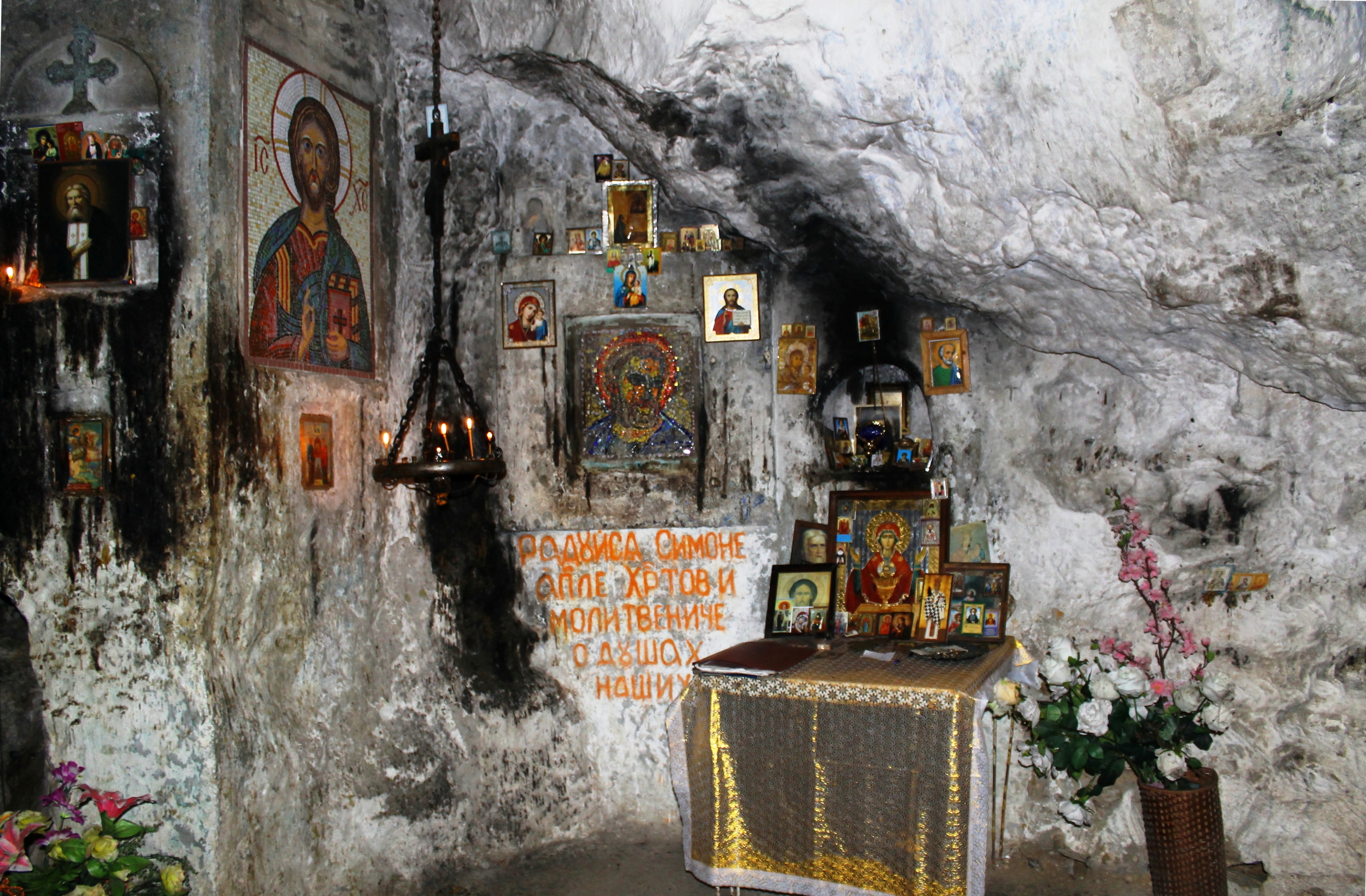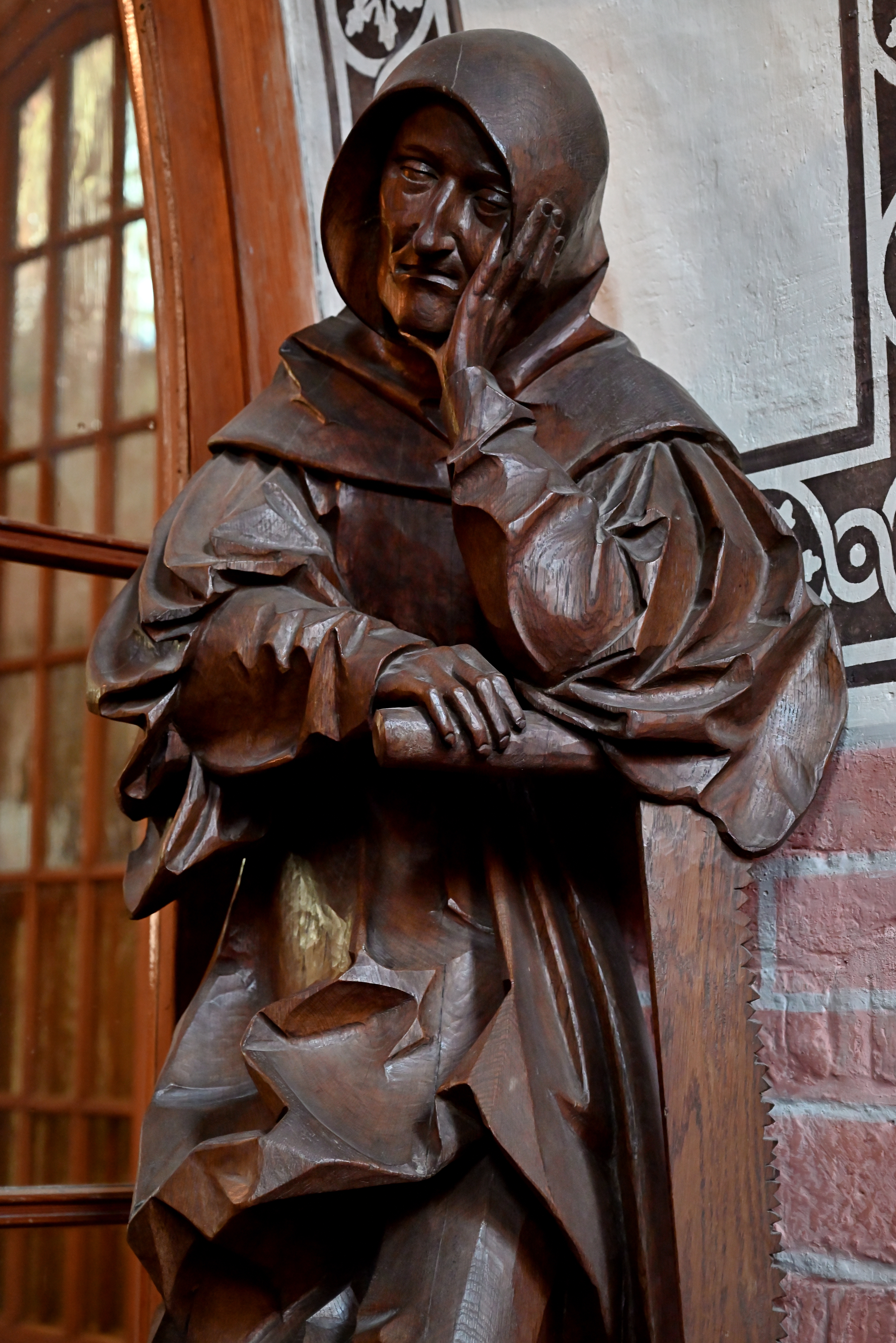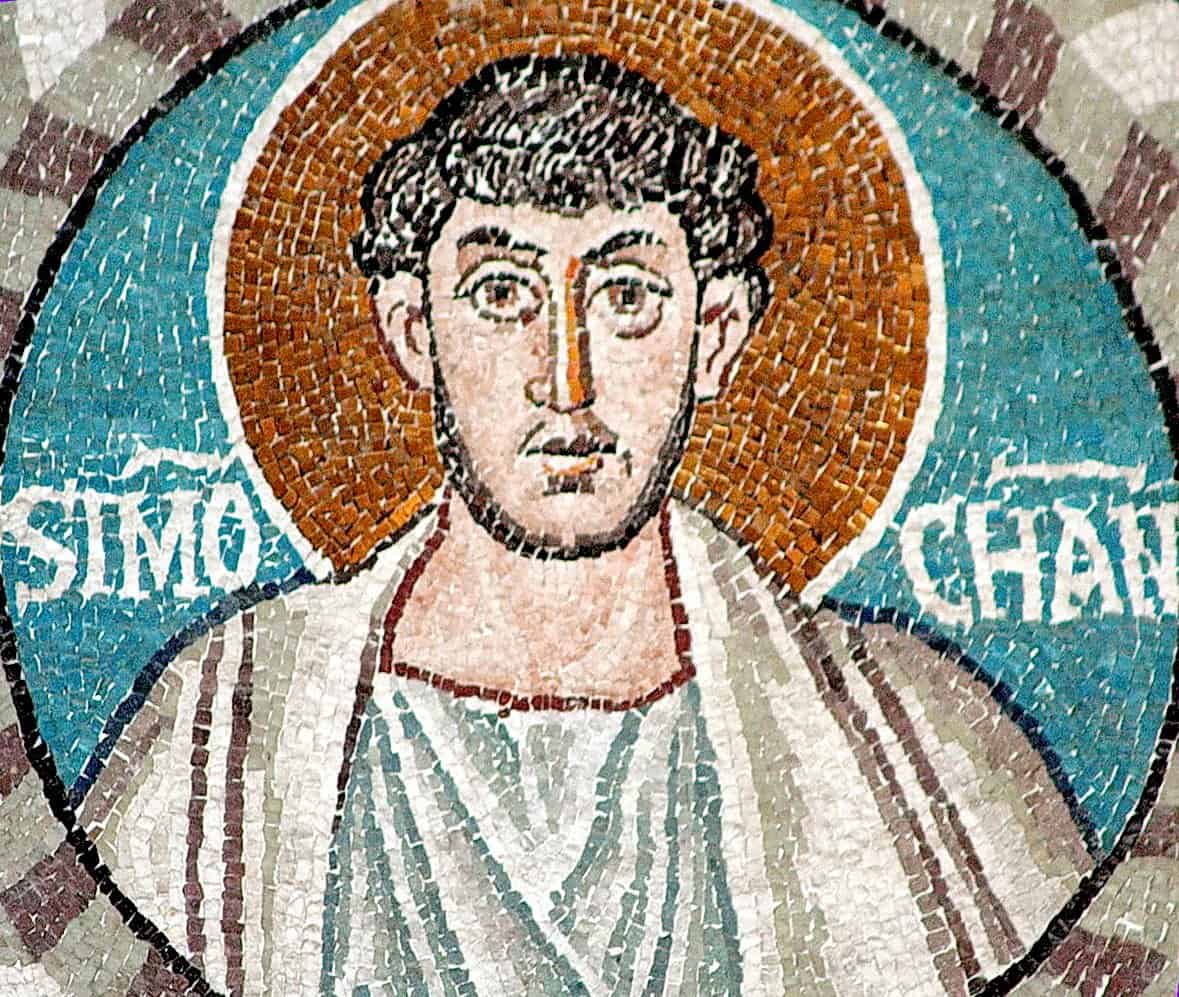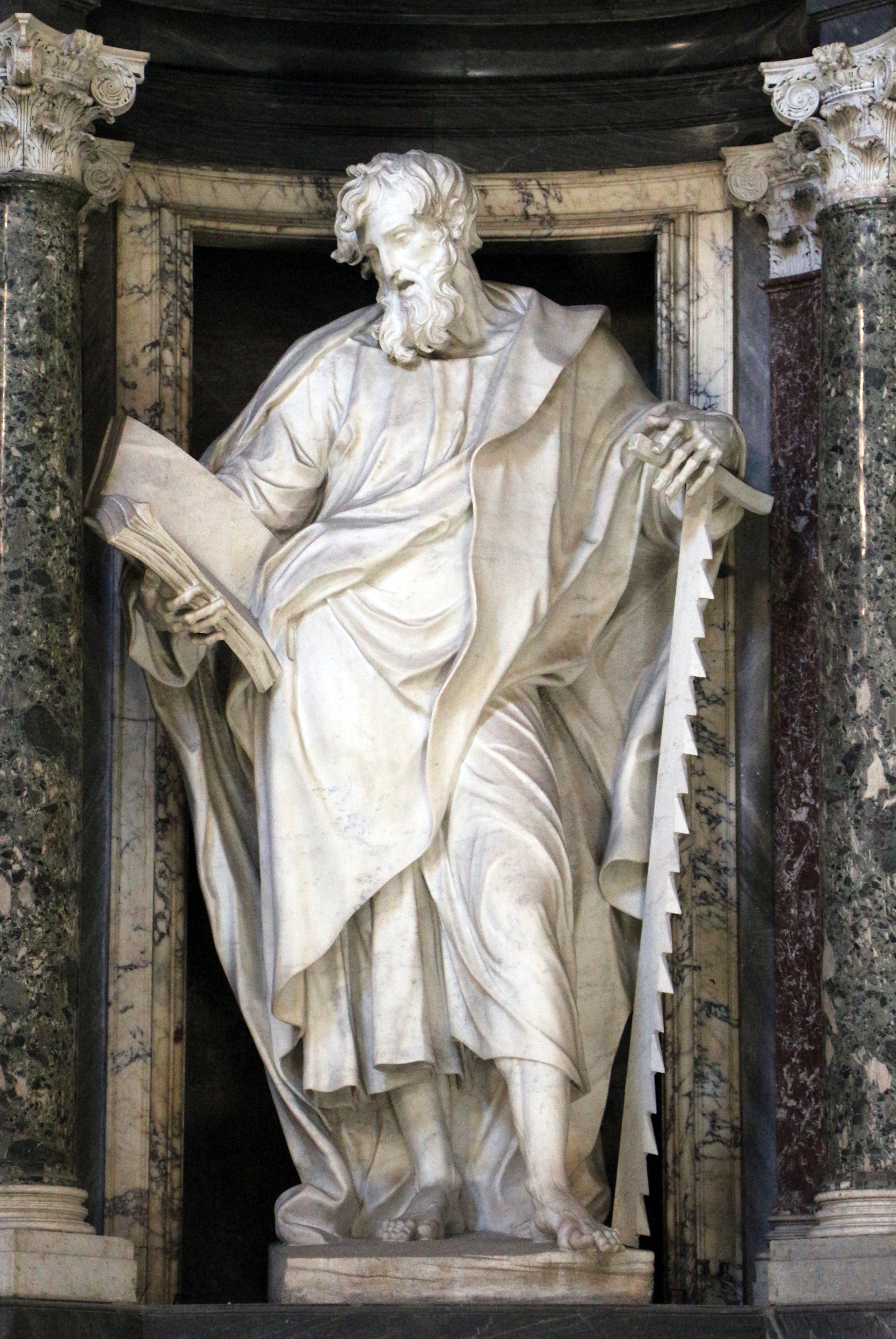1. Overview
Simon the Zealot was one of the twelve apostles of Jesus Christ, frequently distinguished by the epithet "the Zealot" or "the Canaanite." While biblical accounts offer limited details, primarily listing his name among the apostles, later traditions and interpretations have expanded upon his life and missionary activities. His identification as a "Zealot" suggests a background rooted in a Jewish nationalist movement fiercely opposed to Roman rule, highlighting a profound transformation from a potentially militant revolutionary to a follower of Jesus' teachings of peace and reconciliation. This shift underscores a central theme of early Christianity: the capacity for individuals from diverse, even opposing, ideological backgrounds to unite under a new spiritual purpose, emphasizing social change through faith rather than violence.
2. Identity and Names
The name Simon appears consistently in all lists of the apostles found in the Synoptic Gospels and the Book of Acts. To differentiate him from Simon Peter, he is given a distinctive surname in these texts. In the Gospel of Luke (Luke 6:15) and the Book of Acts (Acts 1:13), he is called "Zelotes" (ΖηλωτηςGreek, Ancient), leading to the common assumption that he was a former member of the Zealots, a political party.
In the Gospel of Matthew (Matthew 10:4) and the Gospel of Mark (Mark 3:18), he is referred to as "Kananites" (ΚανανίτηςGreek, Ancient) in the Byzantine majority manuscripts and "Kananaios" (ΚαναναιοςGreek, Ancient) in the Alexandrian manuscripts and the Textus Receptus. Both Kananaios and Kananites are believed to derive from the Hebrew word qanai (קנאיHebrew), which means "zealous." Consequently, most modern scholars interpret these terms as also signifying "Zealot." However, some early Christian scholars, including Jerome and Bede, proposed that "Kananaios" or "Kananite" should be translated as "Canaanean" or "Canaanite," suggesting Simon originated from the town of Cana in Galilee. If this interpretation were correct, his epithet would have been "Kanaios."
Simon is also known in various languages as ⲥⲓⲙⲱⲛ ⲡⲓ-ⲕⲁⲛⲁⲛⲉⲟⲥCoptic in Coptic and ܫܡܥܘܢ ܩܢܢܝܐClassical Syriac in Syriac. His name, שמעוןShim'onHebrew, means "answered" or "heard."
3. Biblical Accounts
Simon the Zealot is mentioned in the lists of the twelve apostles in the Synoptic Gospels and the Book of Acts. These passages provide his name but offer no further specific details about his actions or teachings within the biblical narrative.
In Luke 6:14-16, the list of apostles includes:
"Simon, (whom he also named Peter), and Andrew his brother, James and John, Philip and Bartholomew, Matthew and Thomas, James the son of Alphaeus, and Simon called Zelotes, and Judas the brother of James, and Judas Iscariot, which also was the traitor."
Similarly, he is listed in Matthew 10:2-4, Mark 3:16-19, and Acts 1:13. These consistent listings confirm his status as one of Jesus' closest disciples.
4. Interpretation of Epithets
The epithets attributed to Simon, "Zelotes" and "Kananaios/Kananites," have been subject to scholarly debate regarding their precise meaning and Simon's background. The term "Zelotes" (ΖηλωτηςGreek, Ancient), used in Luke and Acts, is widely understood to indicate that Simon was a former member of the political Zealot party. This group was characterized by its fervent adherence to Jewish law and its militant opposition to Roman occupation in Judea.
The terms "Kananaios" (ΚαναναιοςGreek, Ancient) and "Kananites" (ΚανανίτηςGreek, Ancient), found in Matthew and Mark, are derived from the Hebrew word qanai (קנאיHebrew), meaning "zealous." While most scholars interpret these terms as synonymous with "Zealot," suggesting a political affiliation, an alternative view proposed by early figures like Jerome and Bede suggests a geographical origin. They argued that "Kananaios" could mean "Canaanean" or "Canaanite," implying Simon hailed from the town of Cana in Galilee. This interpretation, if correct, would mean his epithet simply described his place of origin rather than a political leaning.
Some scholars, such as John P. Meier, argue that the term "Zealot" in the context of the Gospels might not refer to the organized political movement, which he suggests did not fully coalesce until 30 to 40 years after the events of the Gospels. Instead, Meier proposes it could simply mean "zealous" or "religious" in adherence to the Law of Moses. However, this view is not universally accepted, with scholars like S. G. F. Brandon and Martin Hengel offering counterarguments. Despite these debates, the prevailing interpretation links Simon to the Zealot movement, highlighting his intense commitment to his beliefs, whether religious or political.
5. Early Life and Ideological Background
Simon's early life before becoming an apostle is not extensively detailed in the New Testament. However, traditions and scholarly interpretations suggest he was born and raised in Cana, a village in Galilee. His epithet, "the Zealot," strongly indicates his affiliation with the Zealot party, an extremist Jewish nationalist group that emerged during the Roman occupation of Judea. This movement, often comprising Pharisees, saw themselves as successors to the Maccabees and fiercely advocated for the liberation of the Jewish people from Roman rule.
The Zealots engaged in acts of resistance, sometimes involving violence, against Roman authorities and Jewish individuals perceived as collaborating with the occupiers. They held a strong belief that the Messiah would appear as a military leader, leading an army to drive out the Romans and establish an independent Jewish kingdom. Given this background, the Zealots initially found it difficult to accept Jesus, whose humble appearance and teachings of peace seemed to contradict their expectations of a powerful, militant Messiah.
Despite this ideological chasm, Simon was profoundly moved by Jesus' sermons and miracles. This experience led him to abandon his militant Zealot affiliations and become a disciple of Jesus. Jesus, in turn, welcomed Simon into his diverse group of followers. This inclusion of individuals from vastly different backgrounds-such as Matthew, a tax collector who cooperated with Roman authorities, and Simon, a radical anti-Roman nationalist-demonstrates Jesus' commitment to fostering unity and reconciliation among people with conflicting ideologies. Simon's transformation from a figure committed to armed resistance to one dedicated to spiritual teachings exemplifies the profound social impact and transformative power of Jesus' message.
6. Apostolic Activities and Traditions
After Jesus' ascension, Simon the Zealot is often associated with Jude the Apostle as an evangelizing team in later Christian traditions. In Western Christianity, they share a feast day on October 28.
The most widely accepted tradition, notably recorded in Jacobus de Voragine's 13th-century collection of hagiographies, The Golden Legend, states that after missionary work in Egypt, Simon joined Jude in Persia and Armenia, or possibly Beirut in modern-day Lebanon. Both apostles are believed to have been martyred there around 65 AD. According to this tradition, after preaching about Jesus and destroying local idols, they were attacked by enraged pagans. Simon is said to have suffered a particularly gruesome martyrdom, being hung upside down on a pillar and sawn in half from his groin to his head.
Other traditions recount various missionary journeys and martyrdoms:
- Some accounts suggest Simon traveled throughout the Middle East and Africa.
- Ethiopian Christians believe he was crucified in Samaria.
- Justus Lipsius recorded that Simon was sawn in half at Suanir, Persia.
- Moses of Chorene indicates he was martyred at Weriosphora in Caucasian Iberia.
- Another tradition claims he died peacefully in Edessa.
- A distinct tradition asserts that Simon visited Roman Britain. In this account, he arrived during his second mission in 60 AD, coinciding with Boudica's rebellion. He was reportedly crucified on May 10, 61 AD, by the Roman official Catus Decianus in Caistor, modern-day Lincolnshire, England. Earlier accounts by Caesar Baronius and Hippolytus of Rome suggest his first arrival in Britain was in 44 AD, during the initial Roman conquest. Nikephoros I of Constantinople wrote that Simon, "surnamed Zelotes" for his fervent devotion, traveled through Egypt, Africa, Mauretania, and all of Libya, preaching the Gospel, and also taught in the Occidental Sea and the Isles of Britanniae.
- Inspired by his title, another tradition links Simon to the First Jewish-Roman War (66-73 AD).
The apocryphal second-century Epistle of the Apostles lists "Judas Zelotes" among the apostles, and some Old Latin translations of Matthew 10:3 substitute "Judas the Zealot" for Thaddeus/Lebbaeus. This has led some to suggest he might be identical with "Judas not Iscariot" mentioned in John 14:22. The apocryphal Arabic Infancy Gospel also mentions a boy named Simon, healed by Jesus from a snakebite, who is told, "you shall be my disciple," concluding with the statement, "this is Simon the Cananite, of whom mention is made in the Gospel."
Isidore of Seville compiled various anecdotes about Simon in his work De Vita et Morte. The Golden Legend also identifies Simon the Cananaean and Judas Thaddeus as brothers of James the Less, and sons of Mary Cleophas and Alphaeus.


7. Discussions on Identity
Despite his inclusion in the lists of apostles, the exact identity of Simon the Zealot has been a subject of historical and theological discussion, particularly concerning his relationship to other biblical figures named Simon.
The Gospels do not directly identify Simon the Zealot with Simon, the brother of Jesus, who is mentioned in Mark 6:3: "Is not this the carpenter, the son of Mary and brother of James and Joses and Judas and Simon, and are not his sisters here with us?"
However, the Catholic Encyclopedia suggests a possible identification of Simon the Zealot with either Simeon of Jerusalem or Simon the brother of Jesus, or both. This would imply he was a cousin of Jesus or a son of Joseph from a previous marriage. Another tradition posits that he is the same Simeon of Jerusalem who served as the second bishop of Jerusalem from 62 to 107 CE, succeeding James the Just, despite being born in Galilee.
Further discussions on his identity arise from apocryphal texts. The second-century Epistle of the Apostles lists "Judas Zelotes" among the apostles. Additionally, some Old Latin translations of Matthew 10:3 substitute "Judas the Zealot" for Thaddeus/Lebbaeus. This has led some readers to speculate that he might be identical with the "Judas not Iscariot" mentioned in John 14:22. If Jude is indeed identical with the Apostle Thomas, then an identification of "Simon Zelotes" with Thomas is also a theoretical possibility. However, these connections remain speculative, and the New Testament itself provides no further details about Simon beyond his listing among the apostles. The identification of Simon Zelotes with Simon Magus by Barbara Thiering has not gained serious scholarly acceptance.
8. Sainthood and Veneration
Simon the Zealot, like the other apostles, is recognized as a saint across various Christian denominations. He is venerated by the Catholic Church, including the Eastern Catholic Churches, the Eastern Orthodox Church, the Oriental Orthodox Churches, the Lutheran Church, and the churches of the Anglican Communion.
In Western Christianity, particularly within the Catholic Church, Simon shares his feast day with Jude the Apostle on October 28. The Church of England also commemorates him (with Jude) with a Festival on October 28. In the Eastern Orthodox Church and the Coptic Orthodox Church, his feast day is observed on May 10. Simon is traditionally regarded as the patron saint of tanners and sawyers, a patronage linked to the tradition of his martyrdom by being sawn in half.
9. Representation in Christian Art

In Christian art, Simon the Zealot is most commonly identified by the attribute of a saw. This symbol directly refers to the tradition of his martyrdom, where he is said to have been sawn in half. This depiction serves as a powerful visual reminder of his suffering and sacrifice.
Simon has been depicted in various artistic forms throughout history:
- A 6th-century mosaic in the Basilica of San Vitale in Ravenna, Italy, features a detail of Simon the Apostle.
- Claus Berg (c. 1470-1532) created a depiction of Simon the Zealot, which can be found at Güstrow Cathedral.
- Caravaggio also painted a representation of Simon the Zealot.
- A statue of Saint Simon (1708-09) by Francesco Moratti is located in the Archbasilica of St. John Lateran.
- A 16th-century fresco depicting Simon Zelotes adorns the eastern wall of the Evangelical church of Leihgestern.
- A statue of Simon the Zealot by Hermann Schievelbein is situated on the roof of the Helsinki Cathedral.
- The Apostle Simon the Zealot is a work by Georg Gsell.
- Saint Simon by James Tissot is part of the collection at the Brooklyn Museum.


10. Mention in Islam
In Islam, Simon is recognized as one of the disciples of Jesus (Isa). Muslim exegesis and Quranic commentary include him among the twelve apostles. According to Muslim tradition, Simon was sent to preach the faith of God to the Berbers, specifically in regions outside North Africa. This highlights his role as a missionary figure within Islamic narratives, consistent with his apostolic calling in Christian tradition.
11. Historical Evaluation and Impact
Simon the Zealot's significance lies not only in his role as one of the twelve apostles but also in the profound transformation attributed to him. His background as a presumed member of the Zealots, a group committed to armed resistance against Roman occupation, provides a compelling narrative of ideological shift. This transition from a militant nationalist to a follower of Jesus, who advocated for peace, love, and spiritual transformation, represents a powerful testament to the inclusive and transformative nature of early Christian thought.
Simon's presence among the apostles, alongside figures like Matthew, a former tax collector who collaborated with the Romans, demonstrates Jesus' deliberate effort to bridge deep societal and political divides. This diverse composition of the apostolic group underscored a message of reconciliation and unity, suggesting that the new faith transcended existing loyalties and conflicts. Simon's conversion thus symbolizes the potential for individuals to redirect their fervent zeal from political or violent ends towards spiritual devotion and social change through peaceful means.
His legacy, though less documented than other apostles, contributes to themes of faith, resistance, and the possibility of radical personal and societal change. Simon the Zealot embodies the idea that even those with entrenched, potentially violent, convictions can undergo a profound spiritual reorientation, channeling their energy into constructive paths that promote human dignity and social progress rather than conflict. His story, therefore, serves as an enduring example of the transformative power of faith in shaping individual lives and influencing broader social movements towards a more just and harmonious world.